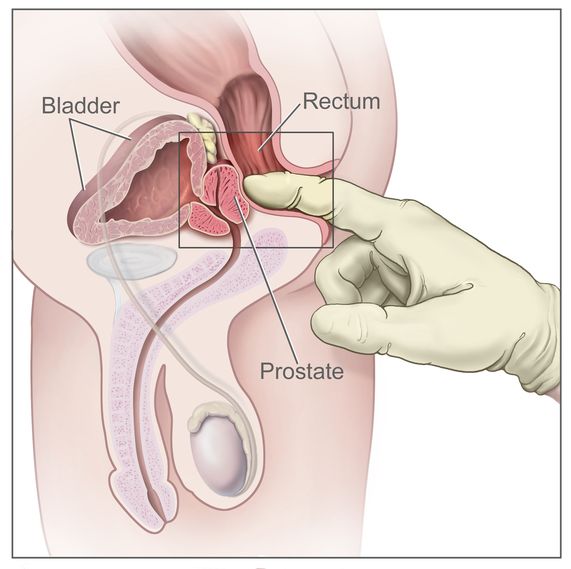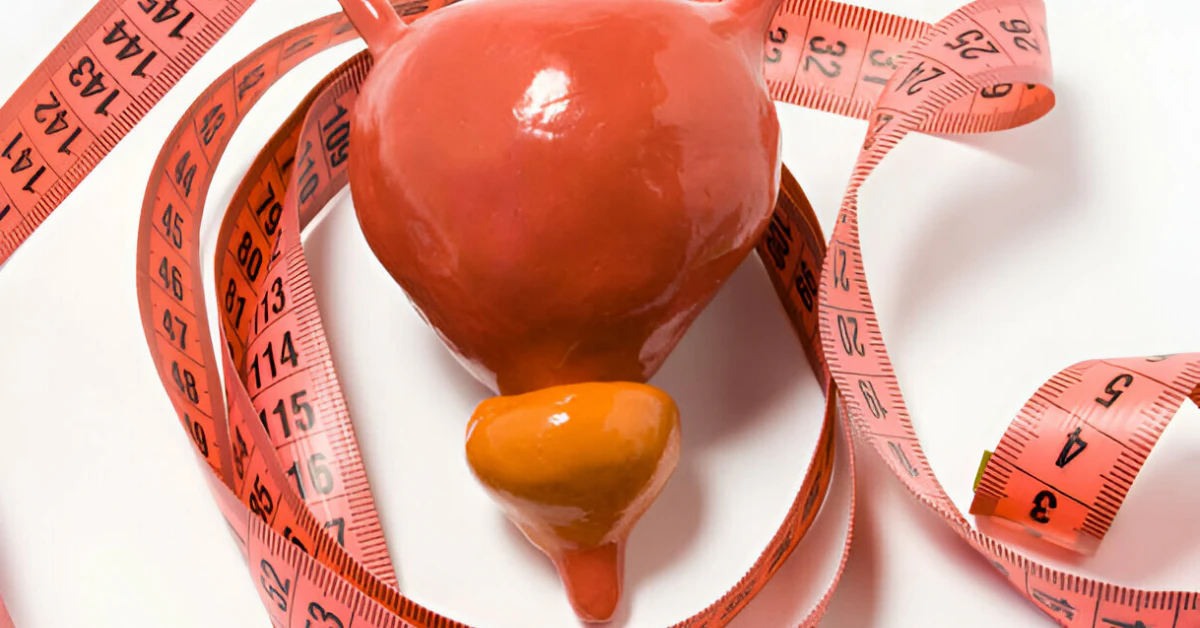You’re not alone if you’ve ever wondered — what exactly is a “normal prostate size”? Or maybe you’ve been told your prostate is a bit bigger than average, and now you’re curious: is that even something to worry about?
Let’s cut to the chase. The average prostate size in men under 60 hovers between 20 and 30 cubic centimeters (cc), or think of it as about the size of a walnut. Sounds small, right? But here’s the thing — it doesn’t stay that way forever. As men age, and thanks to a bunch of not-so-fun hormonal shifts, the prostate starts growing gradually, which is totally normal. However, for some guys, that growth can become a real nuisance.
So whether you’re getting your first check-up, preparing for a doctor’s visit, or just trying to get a better grasp of your own body — let’s walk through this together, in a way that feels like you’re talking with a friend who’s done their homework.
Why Prostate Size Matters
Your prostate doesn’t just hang out there doing nothing — far from it. This little gland under the bladder produces fluid that mixes with sperm to make semen. It also wraps around the urethra, which makes its size super important when it comes to peeing.
Knowing your prostate size helps doctors tell if things are going as they should or if you might be heading into BPH territory (that’s benign prostatic hyperplasia — a fancy name for prostate enlargement).
If you’re suddenly peeing more often, especially at night, or feel like your bladder isn’t fully emptying — or if the stream feels weaker than usual — it might be time to check what’s going on down there. Sometimes the size alone matters; other times, it’s how your body handles the changes.
How Do Doctors Measure Prostate Size?

Alright, so how exactly do we know if a prostate is “normal”? There are a few common ways:
- Digital Rectal Exam (DRE): Yep, it’s exactly what it sounds like. Your doctor slips on a glove, adds some lube, and gently feels the prostate from inside your rectum. Quick and awkward — but surprisingly informative.
- Transrectal Ultrasound (TRUS): A bit more involved, but allows precise volume calculations using images captured via a probe inserted into the rectum.
- MRI or CT scans: Usually reserved for cases where more detail is needed — like suspected cancer or unusual texture.
- PSA Test: Though PSA (prostate-specific antigen) isn’t a direct measure of size, higher levels can sometimes suggest growth or inflammation — and yes, sometimes cancer.
You won’t always need all of these tests, especially if your exam feels routine. But if anything seems off — asymmetry, texture differences, or symptoms — knowing how they measure can help take some mystery out of it.
What’s a Normal Prostate Size by Numbers?
Let’s break it down simply. Here’s what “normal” means in terms of dimensions and volume:
- Width: 3–4 cm
- Height: 2–3 cm
- Length: 4–5 cm
- Volume: ~20–30 cc
This is roughly what most healthy men in their 30s and 40s will have — and ideally, not much more unless things start changing slowly over time.
Age Makes a Difference
We already touched on this, but let’s get a bit more specific. Because actually, age matters quite a lot. The prostate naturally gets bigger — even if it’s silent in the early years. So, where does your age stand in relation to average prostate size? Let’s go over a chart:
| Age Group | Average Prostate Size (Volume in cc) |
|---|---|
| Under 40 | 15–25 cc |
| 40–59 years old | 20–30 cc |
| Over 60 | 25–40 cc |
For example, if you’re wondering “what is the normal size of prostate at the age of 60 in cc?”, it’ll likely land somewhere in the 25–35 cc range, and volumes up to 40 cc still fall within “normal”. But beyond that? Things start getting clinical, particularly if accompanied by symptoms like hesitancy, straining, or frequent bathroom breaks during the night.
What Role Does Testosterone Play?
Here’s something really interesting — and relevant if you’ve heard the phrase “does testosterone increase size of prostate” somewhere along the way.
The short answer is: not directly, but kind of indirectly. When testosterone circulates in your system, it gets converted into another hormone called dihydrotestosterone (DHT). And DHT? It’s like the fuel that feeds prostate growth.
This process explains why the prostate starts to enlarge for many men as they get older — it’s not random; it’s biology. Interestingly enough, medications like finasteride actually inhibit the enzyme responsible for turning testosterone into DHT. Studies have shown that men taking such medicines experience a reduction in prostate size over time — sometimes up to 20% after several years. Neat, huh?
When Is Prostate Enlargement a Problem?
So yes, many older men will notice that their prostate has grown — sometimes quite a bit. But remember: growth doesn’t instantly mean problem.
There’s such a thing as “asymptomatic benign prostatic hyperplasia.” That’s a mouthful, but it means you have a bit of an enlarged prostate… and yet you feel completely fine.
That said, when prostate tissue begins pressing on the urethra, it can affect the flow of urine, which leads to symptoms like:
- Taking longer to start peeing
- Weaker stream
- Feeling that your bladder didn’t quite empty
- Going to the bathroom a whole lot more — especially at night
If those hit home with you, it might be worth talking to a doc. Especially if symptoms start disrupting sleep or daily life — because while the growth itself may be common, the irritation it causes doesn’t have to be ignored.
How Prostate Volume Affects Treatment Choices
Depending on the size of your prostate, treatment strategies vary greatly — and treatment is only necessary when there are symptoms.
- Volume under 30 cc: Often enough, lifestyle adjustments, fluids scheduling, or simple medications like alpha-blockers do the trick.
- Between 30–50 cc: Often treated with combinations of alpha-blockers and 5-alpha reductase inhibitors (a study noted that combining medications improves outcomes for those with medium-to-large prostates).
- Over 50 cc: More aggressive treatments — including surgical options — may begin showing up in discussions.
What matters isn’t just the size of the gland, but how it affects you day-to-day. Some studies suggest that even moderate-size prostates in younger men can cause significant discomfort — while others tolerate very large ones without trouble. Go figure, biology!
Tips for Staying in Tune With Your Prostate Health
Luckily, you don’t have to wait until your annual physical to take care of your prostate health — there are small steps you can take every day to keep things in check:
- Stay hydrated, but spread out fluids: Don’t chug half your water bottle before bed — it’ll mean more trips to the bathroom tonight.
- Eat anti-inflammatory foods: Think omega-3s (salmon, nuts) and leafy greens — which can support general prostate health.
- Exercise regularly: Not only good for your waistline, but linked to lower rates of prostate issues.
- Limit alcohol and caffeine late in the day: These sneaky diuretics make you race to the loo more than necessary.
If you’re looking for another way to improve prostate health, external prostate massage may help. Learn more in this article on external prostate massage and prostate health.
When to Chat With a Doctor
We’ve all heard the phrase “better safe than sorry” — and prostate health is one area where that rings true. So, when should you call in the pros?
- Around age 50, as part of standard preventive care
- Sooner if you’re African-American or have a family history of prostate cancer or BPH
- If you notice changes in urination patterns (frequency, trouble starting, weak stream)
- If you experience pain during urination or ejaculation
All these are signals that might suggest it’s time to dig a little deeper — and trust me, once you’ve had a proper conversation with a real healthcare provider, a lot of fears and misconceptions tend to melt away.
Final Thoughts: Keep It Real, and Keep Checking In
Knowing your “normal prostate size” shouldn’t be a source of anxiety — it’s just data. Sometimes useful, sometimes not. But having that knowledge in your back pocket — especially paired with regular conversations with your doctor — gives you power in navigating your health journey with confidence.
Even though prostates change — and even grow — over time, the good news is that we have options. Modern medicine offers reliable tools for diagnosis, management, and yes — relief when things don’t quite go according to plan.
And hey, if reading this sparked any questions, that’s perfectly okay. You’re taking steps, and curiosity is part of caring for yourself in a world that loves to overcomplicate intimate health topics.
Stay curious, stay connected to what’s happening in your body — and if you ever feel uncertain, don’t hesitate to reach out to a professional who knows their stuff. After all, we’re all navigating this together, and none of us should do it alone.


















Leave a Reply
You must be logged in to post a comment.